Combining Different Technologies and Benefits –
Reimyo CAT-777MKII Vacuum Preamplifier
and
Reimyo KAP-777 Dual Mono Solid State Power Amplifier
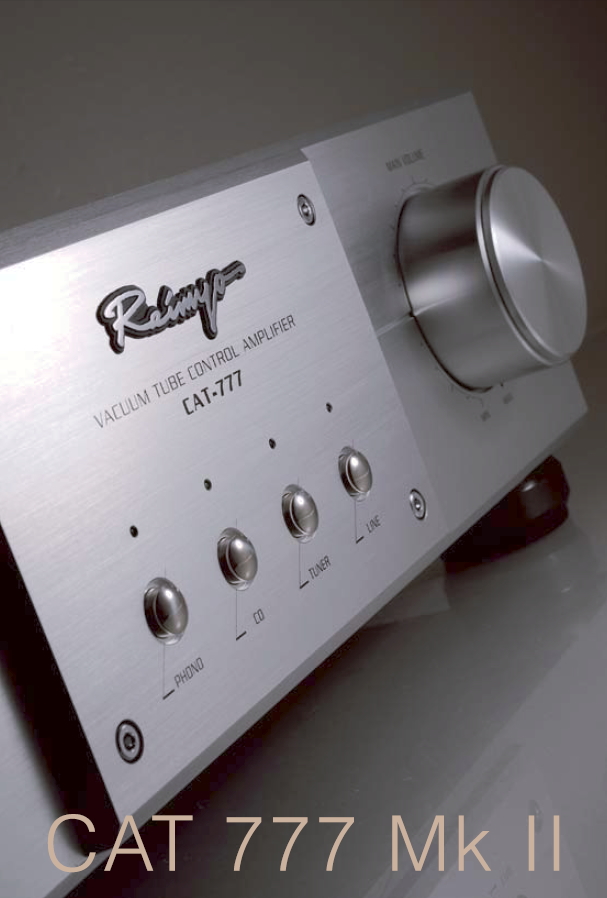
Reimyo – the “miracle” - is a brand of Kazuo Kiuchi’s Combak Corporation, which specialises in the production of high end audio equipment. Mr. Kiuchi is renowned on the market for his tuning devices, including spike bases, tuning feet and audiophile cables under the Harmonix brand name. Reimyo is his second brand for exclusive and limited models of high end audio equipment which are denoted with the number 777. This preamp and power amplifier in this review also have the model number 777, namely the CAT-777MKII and KAP-777. CAT is a vacuum tube preamplifier and the KAP-777 is Reimyo’s first solid state power amplifier.
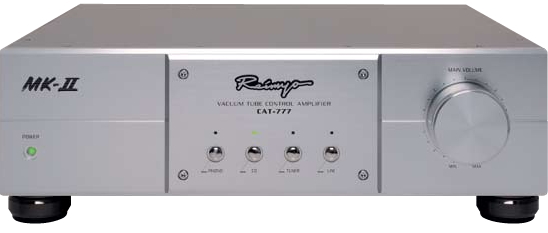
The CAT-777MKII is the improved new-generation successor of the earlier CAT-777, which was introduced in the market in 2006. It is a vacuum tube control amplifier utilising two 6X4WA rectifier vacuum tubes, four 12AU7 vacuum tubes – two for the amplifier and another two for the buffer. There is nothing really special about the circuit design. In fact, only very little has changed in the circuitry design of the vacuum tube amplifier. However, the components used in the vacuum tube amplifiers actually affect the sound tremendously, these being the transformer, power supply, power filtering, cables, and small parts including the layout. Though they look as if they are not very important, they are the secret behind how the vacuum tube amplifier produces its sound character. 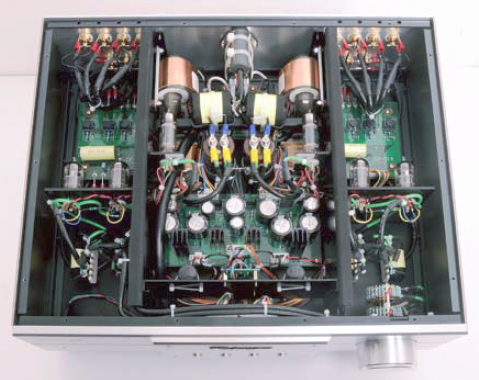 There is not much of a change in the circuitry design in the new version of the CAT, but there is a big upgrade to the components found inside. Reimyo proudly states that it makes most of the components, approximately 90%, itself or has them specially made to its stringent specifications, including the transformers, connecting cables, resistors and capacitors. That is one of the reasons why all “Reimyo” audio equipment has its very own sound character signature.
There is not much of a change in the circuitry design in the new version of the CAT, but there is a big upgrade to the components found inside. Reimyo proudly states that it makes most of the components, approximately 90%, itself or has them specially made to its stringent specifications, including the transformers, connecting cables, resistors and capacitors. That is one of the reasons why all “Reimyo” audio equipment has its very own sound character signature.
After the top cover is removed, we can easily see everything inside. There are 6 individual compartments inside the chassis. The main compartment at the centre is the power supply section. There are 2 C-core transformers with symmetrical designs of capacitors, regulators and so forth for left and right. At both sides, there are the amplification sections with hand-crafted wiring circuits and printed circuit boards.
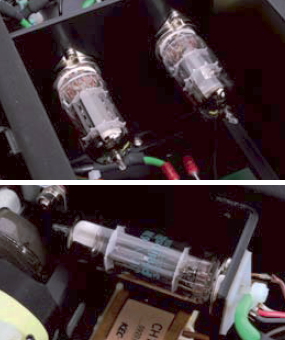
CAT does not utilise negative feedback (NFB) although there are some benefits and some disadvantages, because they know that problems will arise if the NFB is not properly done. Perhaps Reimyo prefers to pay more attention to the circuit and the selected components than to using NFB, so as to maintain its original taste. There are two transformers as dedicated power supplies for the left and right channels. There are 3 different voltages after the regulator, the amplifier section is 250V, the heat power supply is 12V and the relay control section is 5V. There are two independent power supplies for the left and right channels. All the internal wires are directional, and also ultra-low impedance for superior transmission and identical wiring dimensions for both left and right channels. The resistors are select, high-quality non-magnetic carbon type and the capacitors are the InfiniCap custom-made film capacitors.
The chassis of the CAT is made of aluminium with a thickness of 5mm with a front panel that is 10mm thick! The 4 feet are proprietary, round and adjustable-height Harmonix tuning feet with a diameter of 60mm. In the centre of the front panel is another aluminium panel bearing the Reimyo logo (trade mark). There are 4 input selectors including Phono, CD, Tuner and Line right below it. Please note that there is no phono stage (RIAA) built into the CAT. This means you will have to add a Phono amplifier if you wish to connect it to turntable. The Phono input is only designated for those LP lovers to have it as an input option.

There is a big volume knob at the left hand side of the front panel that allows you to set the volume from 0 to 17 dB. Although nowadays the electronic volume control is very popular, they still chose for the CAT the special hand-crafted conventional step volume control with carefully soldered resistors.
On the back panel, in addition to the power IEC socket and the 4 sets of input RCA sockets, there are also 3 sets of output RCA sockets. All of these RCA sockets are also special custom-made and of the highest quality.
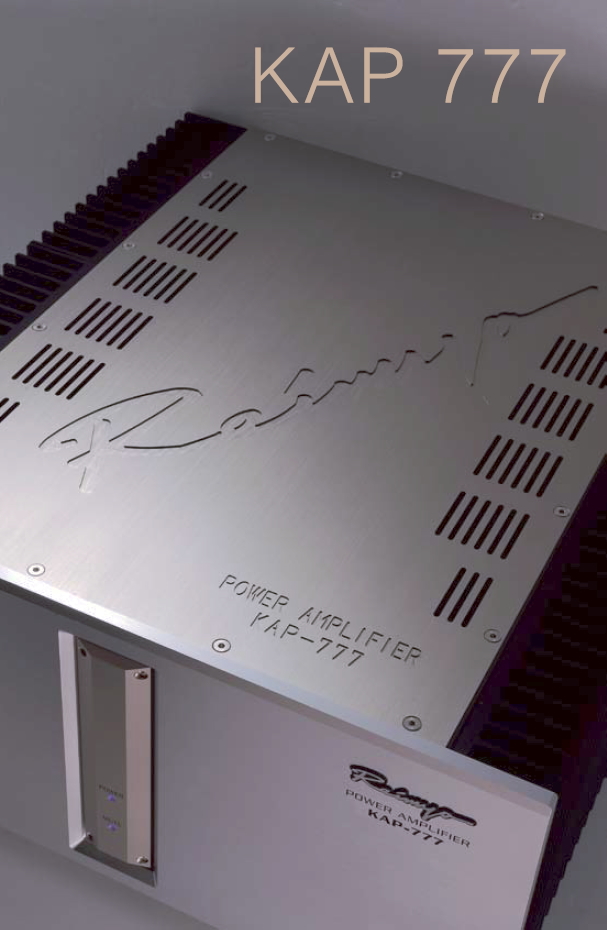
Prior to the KAP-777, Reimyo had a PAT-777 Power Amplifier, which is a 300B type of vacuum amplifier with 2x7W power output. Although the PAT-777 sounds great, the power output is low. I presume that the KAP-777 is designed for those Reimyo fans that need a higher power output amplifier. This is the first solid state amplifier made by Reimyo with the power output of 2x200W (8 ohm) and should easily satisfy the demands of most Reimyo fans.
The KAP-777 is a dual mono design single MOSFT amplifier and was engineered using “High Tech Fusion,” a technology cooperative programme of four major audio and recording studio equipment leaders, which combines the finest technologies (including the accumulated expertise of K2 technology, 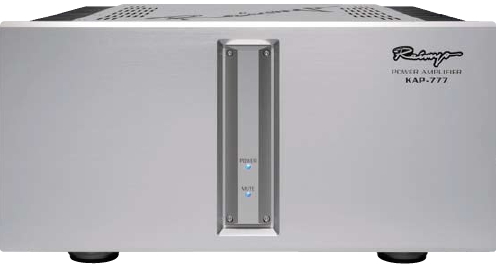 recording studio technology, and Harmonix resonance conditioning) to create the “state-of-the art” performance power amplifier KAP-777.
recording studio technology, and Harmonix resonance conditioning) to create the “state-of-the art” performance power amplifier KAP-777.
Mr. Kiuchi is a vacuum tube lover and that is why his first solid state amplifier has the warm sound of a vacuum tube amplifier. Therefore, it is no surprise that he chose to use MOSFET as the power transistor. That’s right. The circuitry design of the KAP is called “single MOSFET topology configuration.” Most of the powerful amplifiers utilise several MOSFET in parallel to form the power. However, there are disadvantages to this. Thus, the ideal way is to use only a single MOSFET. But there are also some challenges to overcome in this design, such as regarding the temperature and stability of the MOSFET.

Speaking about single MOSFET: there is not merely one MOSFET to drive each channel, there are two. One handles the positive side and the other handles the negative side and they work in sequence. This means that the KAP is the push-pull type, class AB. Although the single MOSFET-driven amplifier is not the exclusive design of Reimyo, their unique “High Tech Fusion” can help the amplifier work steadily under 2 to 8 ohms impedance.
The chassis of the KAP is made of aluminium, as is the CAT. Most of the panels are 7mm thick and it is quite a large amplifier. There are huge aluminium heat sinks on both sides. Inside, the chassis is quite simple; most of the space is occupied by the two massive 400VA toroidal transformers and 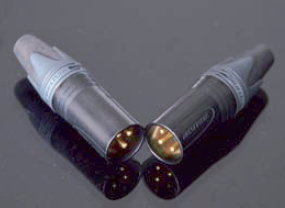 four huge capacitors – this is the source of the power. None of the good amplifiers can overlook this section. Reimyo naturally pays more attention to this in the KAP, being its first solid state amplifier.
four huge capacitors – this is the source of the power. None of the good amplifiers can overlook this section. Reimyo naturally pays more attention to this in the KAP, being its first solid state amplifier.
There are both balanced (XLR) and non-balanced (RCA) inputs on the KAP. Because the CAT-777 only provides RCA outputs, there is a pair of RCA to XLR adaptors included to allow you to use a pair of balanced interconnects. I think this is somewhat unnecessary since you can just use the RCA interconnect cable to connect them. Isn’t that more direct?
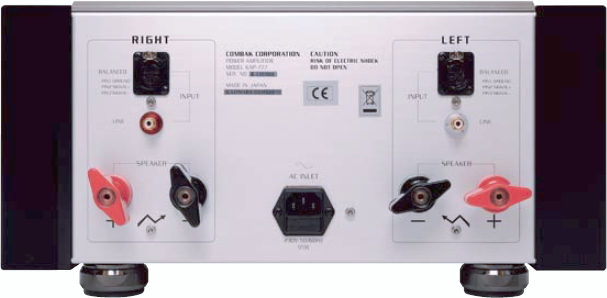
After A Half Hour of Warming Up, the Sound Starts to Get Better
This Reimyo system came with a power cord (Harmonix X-DC15SM-350) and one set of tuning feet (Harmonix TU-505EX MKII). Although the Harmonix tuning feet are already built into both the preamp and power amp, there is an additional set included with the system. And so I used this set as well. The power on/off switches for both units are at the bottom of the equipment – and were not easy to find. After switching on the CAT, the LED appears in red and turns green after approximately 40 seconds, which indicates that the heating is in a stable status. The KAP has also a Mute LED in addition to the Power LED. It too first appears in red and then turns green; there is no sound when it is in red. I could hear the sound fairly well just as it turned green. However, the sound gets gradually better and better after a half hour of warming up.

My first impression with the Reimyo system was its excellent separation. The separation of the left and right stages and the separation of the musical instruments and vocals are very clear. I got this impression from listening to the album “Peter, Paul and Mary,” which is an old recording held in high esteem by many audiophiles. It is the ideal album for testing the left, centre and right positions. The Reimyo system reproduces it so clearly; especially the double bass, which is no longer just a bass note with an image that is blurry and approximate. Now you can easily point out its position through the reproduction of the Reimyo system. It is not so much the excellent sound that is surprising, but the ability to hear everything so clearly as to be able to tell the position of each of the singers and musical instruments, especially the double bass. I know of only very few systems that can do this, and this Reimyo system is one of them.
Clear & Elegant Sound; Excellent Imaging
Another impression I had with the Reimyo system was its unexpectedly transparent and elegant sound. At first I thought the vacuum tube preamplifier would offer a very rich type of sound, especially since Mr. Kiuchi is also a vacuum tube supporter. The Reimyo system delivers the “sweet” type of sound from the vacuum tube amplifier, but it is not too rich. You can easily discover this by listening to the “Peter, Paul and Mary” album. The vocals sound sweet and sensitive, and are neither too rich nor heavy. I prefer this clear and elegant sound with its superb clarity, and find it much more appealing in comparison with listening to the old vacuum tube amplifiers that offer such a heavy, rich and sweet sound.
Based on what I have written above, you may imagine that the sound of the Reimyo system is extremely detailed so as to have such good separation and transparent sweet sound. That’s right – the Reimyo system not only outlines the images of each musical instrument and voice, but also lets you feel as if the musicians and the singers are performing right in front of you. Although paying 300K+ is not inexpensive for the Reimyo system, it is really worth having such an outstanding system that can give you this kind of feeling.
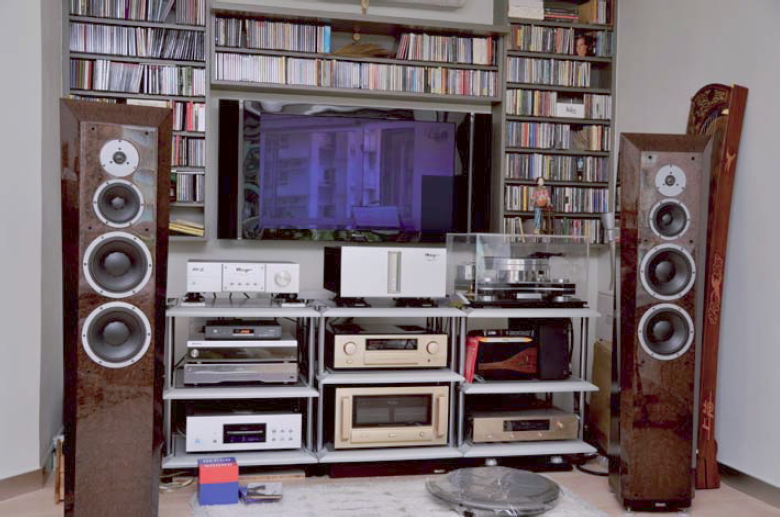
It would have been a big waste if I had not used this system to listen to a symphony orchestra. I recently bought a lot of good classical CDs. It was so enjoyable just listening to the set from Decca. One was “Romantic Russia” conducted by Georg Solti. When I was listening to it, I could easily imagine Georg Solti adjusting his hands by straining his muscles for the rigid movements and relaxing his hands for the soft movements. Listening to the orchestra play romantic melodies and then louder and more exciting themes was as if a real live orchestra was in front of me. This Reimyo system easily lets you “see” the image of the orchestral stage set in a fan-shape.
Not Just Sweet Sound, But Great Impact
The KAP’s 200W power output should be sufficient for the usual hi-fi system in a normal household environment. It has no problem handling all the loud and exciting music played by symphony orchestras, and was capable of driving my Dynaudio Sapphire speakers smoothly and effortlessly. Whether it was the Polovtsian Dances in the “Romantic Russia” album or the powerful big drum with chorus in Telarc’s “Flange of the Song” or the Dire Straits’ “Brothers in Arms,” you could clearly hear and feel the deep, powerful bass. This Reimyo system not only offers you a sweet vacuum tube type of sound, it also provide you the powerful, but fast transient impact – it really surprised me.
Nothing Can Beat It When Listening to Jazz
The CAT+KAP make vocal, classical, cheerful and even “angry” music all very enjoyable. My favourite, however, is using the system to play jazz – especially small-group jazz. It was so relaxing and comfortable, just like listening to a live performance – a real stress reducer. For example, listening to the album “We Get Requests” you could feel the spiritual communication amongst the three musicians. The piano sounds clear and smooth, and the percussion so excellent that a sudden and well-timed “ding” makes you move your head to look. The deep, low melodies of the double bass blend you into the music and make you forget about your hi-fi equipment. 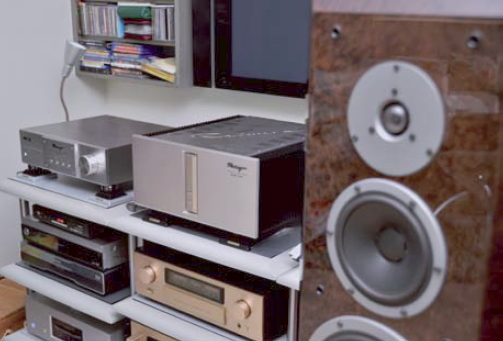 Many people say that there is only one good song, namely “You Look Good to Me,” worth listening to from this album. May I suggest you spend a quiet evening, sit down, relax, and listen to the entire album? Then you’ll discover that there is more than one good song to listen to on this album. Of course, if you have the CAT+KAP system, the evening would be really perfect!
Many people say that there is only one good song, namely “You Look Good to Me,” worth listening to from this album. May I suggest you spend a quiet evening, sit down, relax, and listen to the entire album? Then you’ll discover that there is more than one good song to listen to on this album. Of course, if you have the CAT+KAP system, the evening would be really perfect!
I also enjoy listening to jazz with vocals, such as Diana Krall, Ella Fitzgerald and Louis Armstrong. It is through these artists that the Reimyo system even better demonstrates how relaxed, precise and natural musical reproduction can be.
Conclusion
CAT & KAP is a well-balanced, precise and signature-character amplifier system. Perhaps you think that having character is not compatible with high-fidelity. In fact, I haven’t found any equipment that is completely neutral and without some character. There are many different brands available in the market and they have their own fans because each has its own character to suit different tastes. But it is the character of the CAT + KAP system that sets the goal to which many other audio equipment makers only aspire. I can honestly say that this is the perfectly matched system that combines numerous technologies and benefits and is a truly excellent amplifier system.